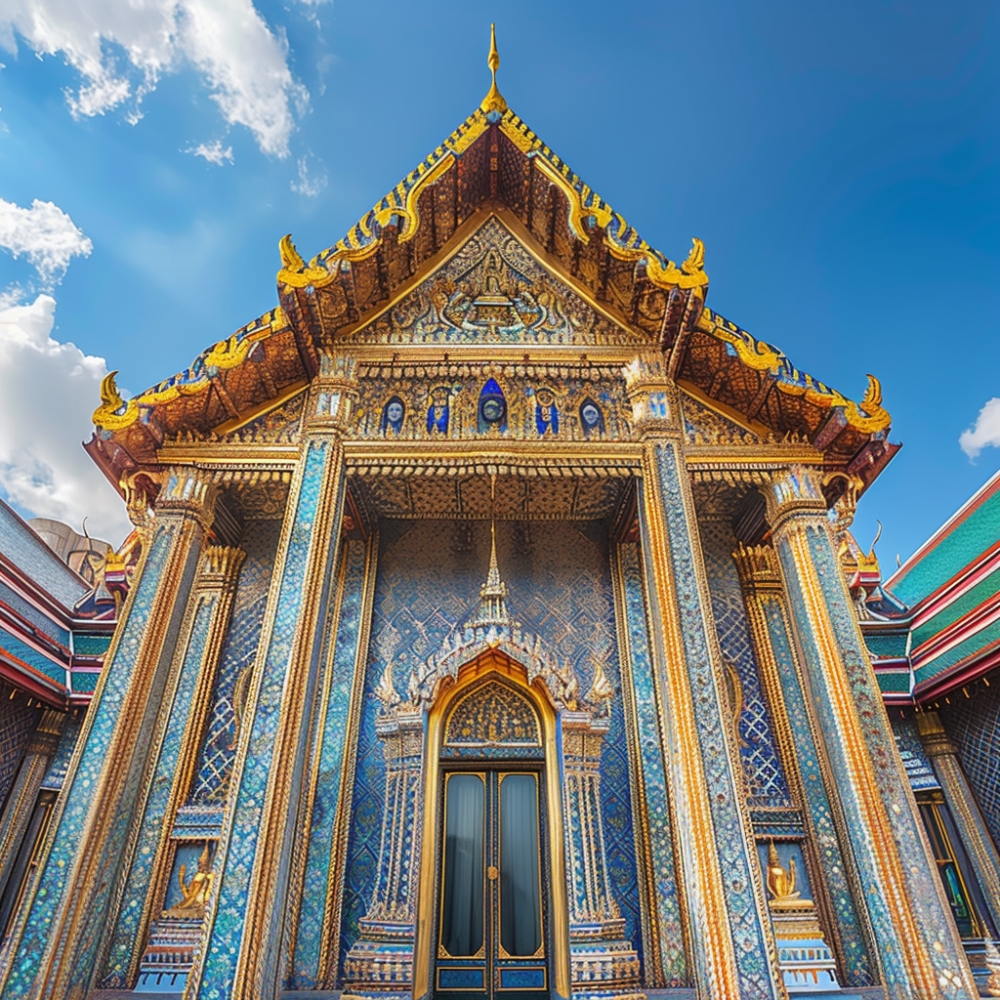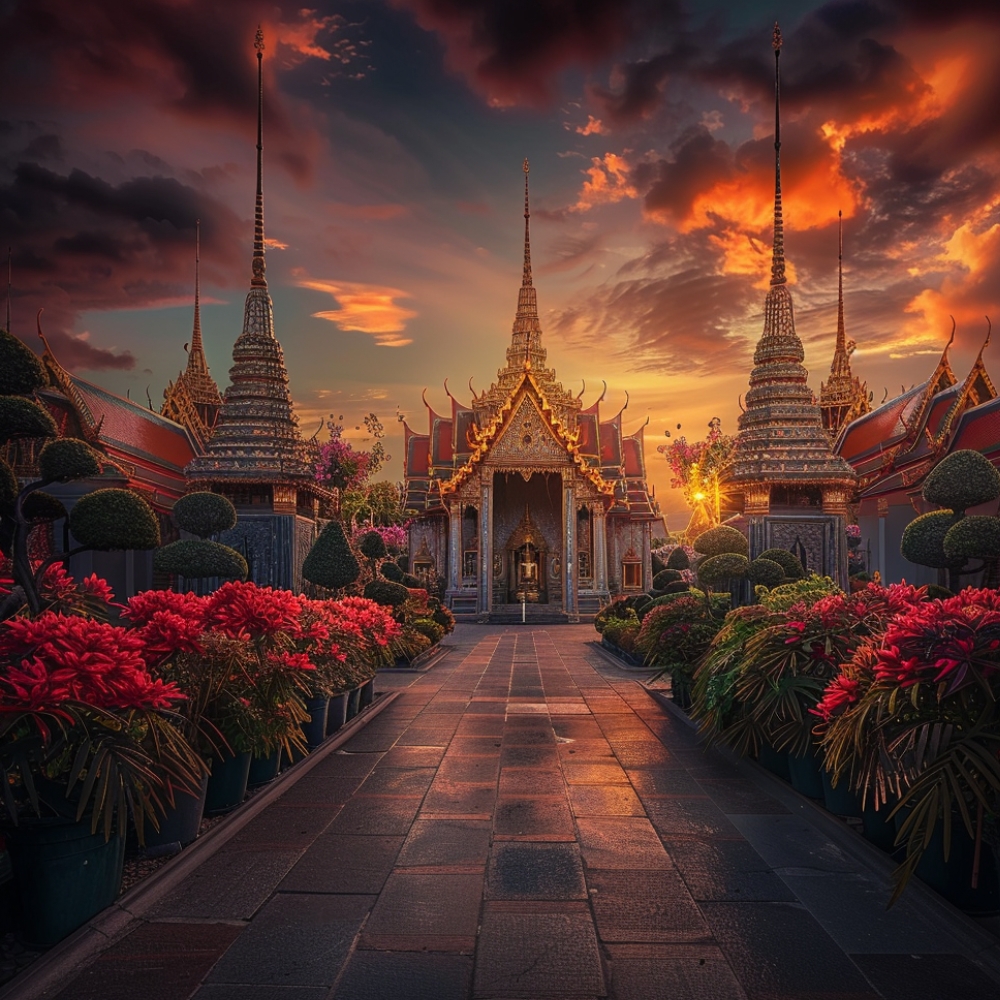Thailand is home to some of the most breathtaking temples in the world, each offering a glimpse into the country’s rich cultural heritage. These sacred spaces are not just places of worship; they are architectural marvels that reflect centuries of history, artistry, and spirituality. As you travel Thailand, you’ll discover that each temple tells a unique story, inviting travelers to explore their beauty and significance. From the golden stupas to intricate carvings, these temples are a must-see for anyone looking to immerse themselves in the heart of Thai culture. Prepare to be captivated by their allure!
The Cultural Significance of Thai Temples
Temples play a vital role in Thai society, serving as spiritual hubs for worship and community gatherings. They are places where locals come to seek guidance, celebrate festivals, and connect with their heritage. The architectural styles of these temples are diverse, with prominent examples like Wats, chedis, and intricate Buddha images that showcase Thailand’s artistic brilliance. Each temple reflects unique design elements, often adorned with vibrant colors and ornate decorations that tell stories from Buddhist teachings. Beyond their spiritual significance, these temples also attract millions of tourists each year, bridging the gap between culture and travel. As visitors explore these sacred sites, they gain insight into Thailand’s rich history and traditions, making temple visits an essential part of the travel experience in Thailand.

Top Temples to Visit in Thailand
1. Wat Phra Kaew (Temple of the Emerald Buddha)
Wat Phra Kaew, also known as the Temple of the Emerald Buddha, is one of Thailand’s most revered temples, located within the grounds of the Grand Palace in Bangkok. This temple was established in 1782 and is home to the Emerald Buddha, a highly sacred statue that symbolizes the nation’s spiritual identity. The temple’s stunning architecture features intricate details, with golden spires and vibrant mosaics that dazzle visitors. The Emerald Buddha is not just a masterpiece of craftsmanship; it is also an important cultural symbol, representing the kingdom’s prosperity and protection. Travelers must visit Wat Phra Kaew to experience its profound beauty and spirituality. The temple’s serene atmosphere and historical significance make it a highlight of any trip to Thailand, offering a glimpse into the country’s royal heritage and deep-rooted traditions.
2. Wat Pho (Temple of the Reclining Buddha)
Wat Pho, known as the Temple of the Reclining Buddha, is another must-visit temple in Bangkok. This temple dates back to the 16th century and is famous for its impressive 46-meter-long reclining Buddha statue, which is covered in gold leaf and decorated with mother-of-pearl inlays. The statue represents the Buddha entering Nirvana, a powerful symbol of peace and enlightenment. Wat Pho is also home to Thailand’s first school of traditional medicine, where visitors can learn about Thai massage techniques and enjoy authentic treatments. To make the most of your visit, try to go early in the morning to avoid crowds, and consider exploring the nearby area, which includes the stunning Wat Arun across the river. Wat Pho is not just a temple; it’s an experience that combines spirituality, culture, and relaxation, making it a favorite among travelers.
3. Wat Arun (Temple of Dawn)
Wat Arun, often referred to as the Temple of Dawn, is an architectural gem located along the banks of the Chao Phraya River in Bangkok. This stunning temple is renowned for its towering spires, or prangs, which are adorned with colorful Chinese porcelain and seashells. The intricate details and vibrant colors create a breathtaking sight, especially during sunrise and sunset, making these the best times for photography. As the sun rises, the temple glows beautifully, reflecting off the river, creating a serene and picturesque scene. Visitors can enjoy a scenic boat ride along the Chao Phraya River to reach Wat Arun, making the journey as memorable as the destination itself. This temple is not just a symbol of Bangkok; it is a masterpiece that captures the essence of Thai artistry and spirituality.
4. Wat Rong Khun (White Temple)
Wat Rong Khun, also known as the White Temple, is a striking example of modern Thai architecture, located in Chiang Rai. Unlike traditional temples, Wat Rong Khun is entirely white, symbolizing the purity of Buddha. The temple’s design features intricate details, with glass embedded in the plaster to create a sparkling effect under the sunlight. Artistic elements throughout the temple depict Buddhist themes and contemporary symbols, making it a unique blend of spirituality and modern art. Art and culture enthusiasts will appreciate the thought-provoking sculptures and murals, which often convey messages about morality and the human experience. Wat Rong Khun is not just a place of worship; it is a stunning canvas that challenges traditional temple aesthetics, attracting visitors who seek both beauty and deeper meaning in their travels.
5. Wat Saket (Golden Mount)
Wat Saket, also known as the Golden Mount, is a historic temple perched atop a hill in Bangkok, offering a unique blend of spirituality and stunning views. Built during the Ayutthaya period and later renovated in the late 18th century, this temple is home to a golden stupa that houses sacred relics of the Buddha. The ascent to the top involves climbing 318 steps, but the effort is rewarded with breathtaking panoramic views of the city. Visitors can enjoy a peaceful atmosphere as they ascend, surrounded by lush gardens and serene Buddha statues. Wat Saket is also known for its vibrant cultural festivals, particularly the annual Phu Khao Thong Festival, which attracts both locals and tourists. During this time, the temple comes alive with traditional music, food stalls, and religious ceremonies, making it an excellent opportunity to experience Thai culture and spirituality.
Tips for Traveling to Thailand’s Temples
When visiting Thailand’s temples, it’s essential to dress modestly. Wear clothing that covers your shoulders and knees as a sign of respect. Always be mindful of your behavior; speak softly and remove your shoes before entering sacred areas. When taking photos, avoid using flash in quiet spaces and be respectful of worshippers. To make the most of your visit, consider traveling during the low season (May to October) to avoid large crowds and enjoy a more peaceful experience. Planning your visits early in the morning can also help you capture stunning photos without the hustle and bustle of other tourists.

Conclusion
Thailand’s temples are not only stunning architectural marvels but also deeply woven into the country’s cultural fabric. Their beauty and significance make them essential stops on any travel itinerary. Explore these incredible sites and immerse yourself in the rich traditions of Thailand—your adventure awaits!
Read More :


